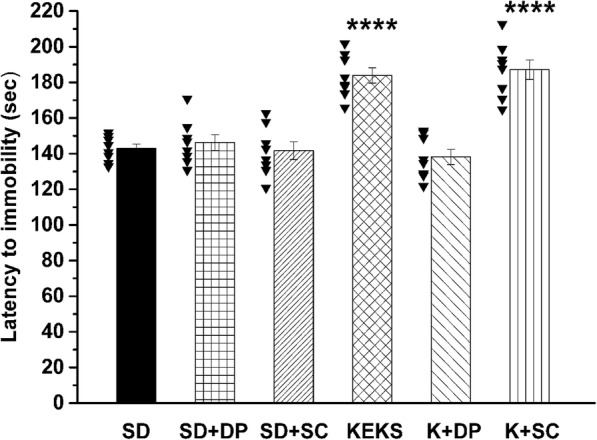Fig. 3.

Influence of A1R antagonist DPCPX and A2AR antagonist SCH 58261 on KEKS-generated changes in isoflurane-evoked anesthesia (latency to immobility). Administration of DPCPX (i.p. 0.2 mg/kg; SD + DP; group 7) and SCH 58261 (i.p. 0.5 mg/kg; SD + SC; group 8) alone did not modulate the latency to immobility, compared to control (SD; the raw data was plotted as filled black triangles to the left of the columns). Combined administration of DPCPX (i.p. 0.2 mg/kg) with KEKS (K + DP; group 9) completely abolished the effect of KEKS on latency to immobility, whereas SCH 58261 (i.p. 0.5 mg/kg) was ineffective on the KEKS-induced influence (K + SC; group 10); Abbreviations: DP (DPCPX), 1,3-dipropyl-8-cyclopentylxanthine (a specific adenosine A1 receptor/A1R antagonist); KEKS, mix of KE and KS in a 1:1 ratio; SC (SCH 58261), 7-(2-phenylethyl)-5-amino-2-(2-furyl)-pyrazolo-[4,3-e]-1,2,4-triazolo[1,5-c] pyrimidine (a selective adenosine A2A receptor/A2AR antagonist); SD, standard diet/control; ****p < 0.0001
